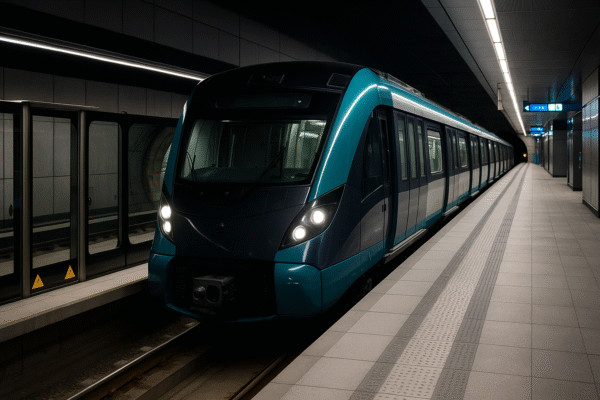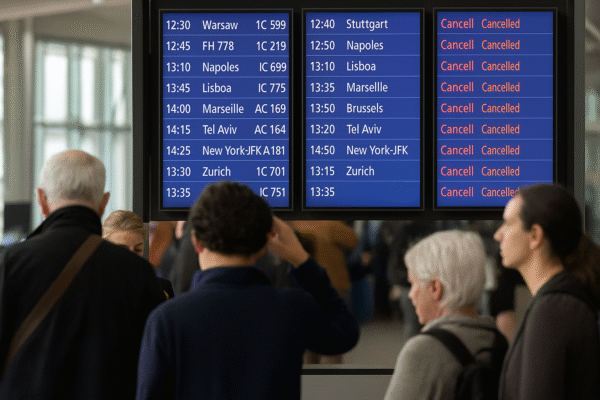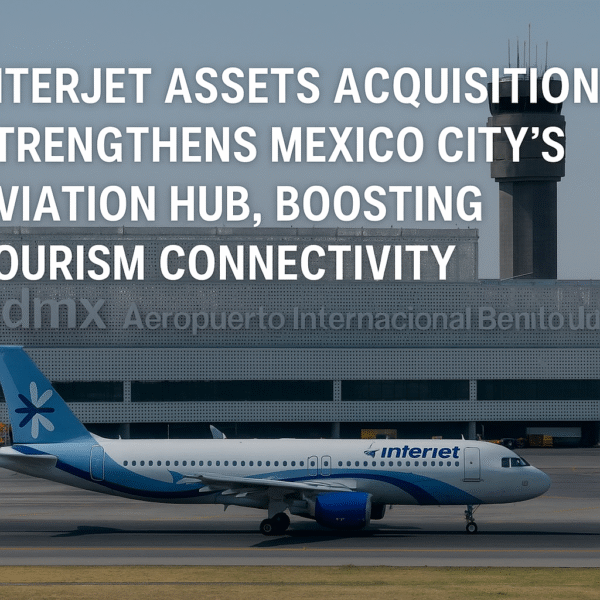Mexico City – In a major move aiming to propel Mexico’s aviation and tourism sectors forward, Mexico City International Airport (Aeropuerto Internacional Benito Juárez) has acquired the assets of now-defunct airline Interjet. This high-impact development promises to expand flight capacity, enhance connectivity, and offer improved travel options to both domestic and international tourists.
Interjet: From Collapse to Catalyst
Once one of Mexico’s largest low-cost carriers, Interjet ceased operations in December 2020 amid financial turmoil. Despite attempts at restructuring, the airline was formally declared bankrupt in 2023 as courts ordered its assets sold to settle debts.
Now, by integrating Interjet’s aircraft resources, route rights, and infrastructure into its operations, Mexico City International Airport is poised to rejuvenate critical air links. Airport leadership anticipates that this integration will increase flight frequency, diversify route availability, and generate sharper fare competition—ultimately enhancing the travel experience.
Strengthening Domestic and International Travel
As Mexico’s primary aviation hub, MEX plays a key role in connecting tourists to hotspots like Cancún, Los Cabos, Guadalajara, and Monterrey. The Interjet asset takeover will allow for an immediate capacity boost on these high-demand corridors.
With expanded aircraft availability and replenished route capacity, travelers can look forward to increased flight options, shorter waiting times, and competitive pricing. Mexico City becomes an even more efficient point of entry from major origins such as New York, Madrid, Miami, and Buenos Aires.
Advantages for Regions and Economies
Beyond the airport, the ramifications are felt nationwide. With more flights originating from the capital, secondary destinations—from cultural centers like Oaxaca and Puebla to natural gems like Tulum and San Cristóbal de las Casas—gain better access. This expansion supports tourism diversification and economic inclusion across regions.
Greater flight volumes also create ripple effects: more frequent travelers bolster airlines, hotels, local transport, artisans, and restaurants—stimulating employment and income generation. Tourism-driven growth is expected to extend to rural tourism too, as new arrival points become viable gateways for exploration.
Sustainable Growth Helps Meet Mexico’s Tourism Goals
The aviation and tourism strategy aligns closely with Mexico’s push for eco-conscious travel. Interjet’s modern, fuel-efficient jet models are expected to replace older counterparts, helping lower emissions and noise. At the same time, Mexico City Airport continues advancing green initiatives—such as electric ground vehicle infrastructure, better recycling systems, and green rooftop installations—to complement its connectivity improvements.
Conclusion: A Lift Off for Mexico’s Tourism Future
The formal takeover of Interjet’s assets marks a pivotal moment for Mexico’s aviation landscape. Mexico City International Airport’s expanded capacity enhances both connectivity and competitiveness. Travelers can expect more routes, better fares, and enhanced access to Mexico’s rich cultural and natural destinations.
As Mexico solidifies its position as a leading travel destination, this acquisition lays essential groundwork for sustainable tourism—while reaffirming the importance of aviation capacity as a driving force for national prosperity.
For more travel news like this, keep reading Global Travel Wire














